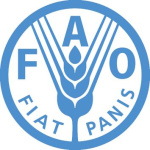- Domeniu: Agriculture
- Number of terms: 87409
- Number of blossaries: 0
- Company Profile:
Established in October 1945 with the objective of eliminating hunger and improving nutrition and standards of living by increasing agricultural productivity, FAO coordinates the efforts of governments and technical agencies in programs for developing agriculture, forestry, fisheries, and land and ...
1. The uptake and establishment of DNA in a bacterium or yeast cell, in which the introduced DNA often changes the phenotype of the recipient organism.
2. Conversion by various means of animal cells in tissue culture from controlled to uncontrolled cell growth. Typically through infection by a tumour virus or transfection with an oncogene.
Industry:Biotechnology
1. The use of biological processes or organisms for the production of materials and services of benefit to humankind. Biotechnology includes the use of techniques for the improvement of the characteristics of economically important plants and animals and for the development of micro-organisms to act on the environment.
2. The scientific manipulation of living organisms, especially at the molecular genetic level, to produce new products, such as hormones, vaccines or monoclonal antibodies.
Industry:Biotechnology
1. The variety of species (species diversity) or other taxa of animals, micro-organisms and plants in a natural community or habitat, or of communities in a particular environment (ecological diversity), or of genetic variation in a species (genetic diversity, q.v.). The maintenance of a high level of biodiversity is important for the stability of ecosystems.
2. The variety of life in all its forms, levels and combinations, encompassing genetic diversity, species diversity and ecosystem diversity.
Industry:Biotechnology
1. To test or evaluate.
2. The procedure for measuring the quantity of a given substance in a sample (chemically or by other means).
3. The substance to be analysed.
Industry:Biotechnology
1. Treatment (e.g., use of chloramphenicol) designed to increase the proportion of plasmid DNA relative to that of bacterial (host) DNA.
2. Replication of a gene library in bulk.
3. Duplication of gene(s) within a chromosomal segment.
4. Creation of many copies of a segment of DNA by the polymerase chain reaction (PCR)
Industry:Biotechnology
1. Union of sex cells (gametes) or unicellular organisms during fertilization.
2. The unidirectional transfer of DNA (bacterial plasmid) from one bacterium cell to another and involving cell-to-cell contact. The plasmid usually encodes the majority of the functions necessary for its own transfer.
Industry:Biotechnology
1. Unlimited growth potential for a definite or indefinite period. Some apical meristems can produce unrestricted numbers of lateral organs.
2. In legumes, used to describe plant architecture.
Industry:Biotechnology
1. Verb: To determine the relative positions of loci on a DNA molecule. Linkage mapping is done by estimating the recombination fraction between loci, from the genotypes of offspring of particular matings. The further apart two loci are on a chromosome, the greater will be the frequency of recombination between them up to a maximum of 50%, the situation observed when they are sufficiently far apart on a chromosome that recombinant gametes are as frequent as non-recombinant gametes, or when they are on different chromosomes. Physical mapping is usually performed by the use of <i>in situ</i> hybridisation of cloned DNA fragments to metaphase chromosomes.
2. Noun: A diagram showing the relative positions of, and distances between, loci.
Industry:Biotechnology
1. Verb: To distribute a thin film of something. Hence micro-organisms or plant cells are plated onto nutrient agar.
2. Noun: Refers to the two segments of a Petri dish or a similar-shaped item.
Industry:Biotechnology
